OnePlus 10 Pro review: one step closer to the top
The OnePlus 10 Pro is tough competition for flagship smartphones from Samsung, Apple and Google

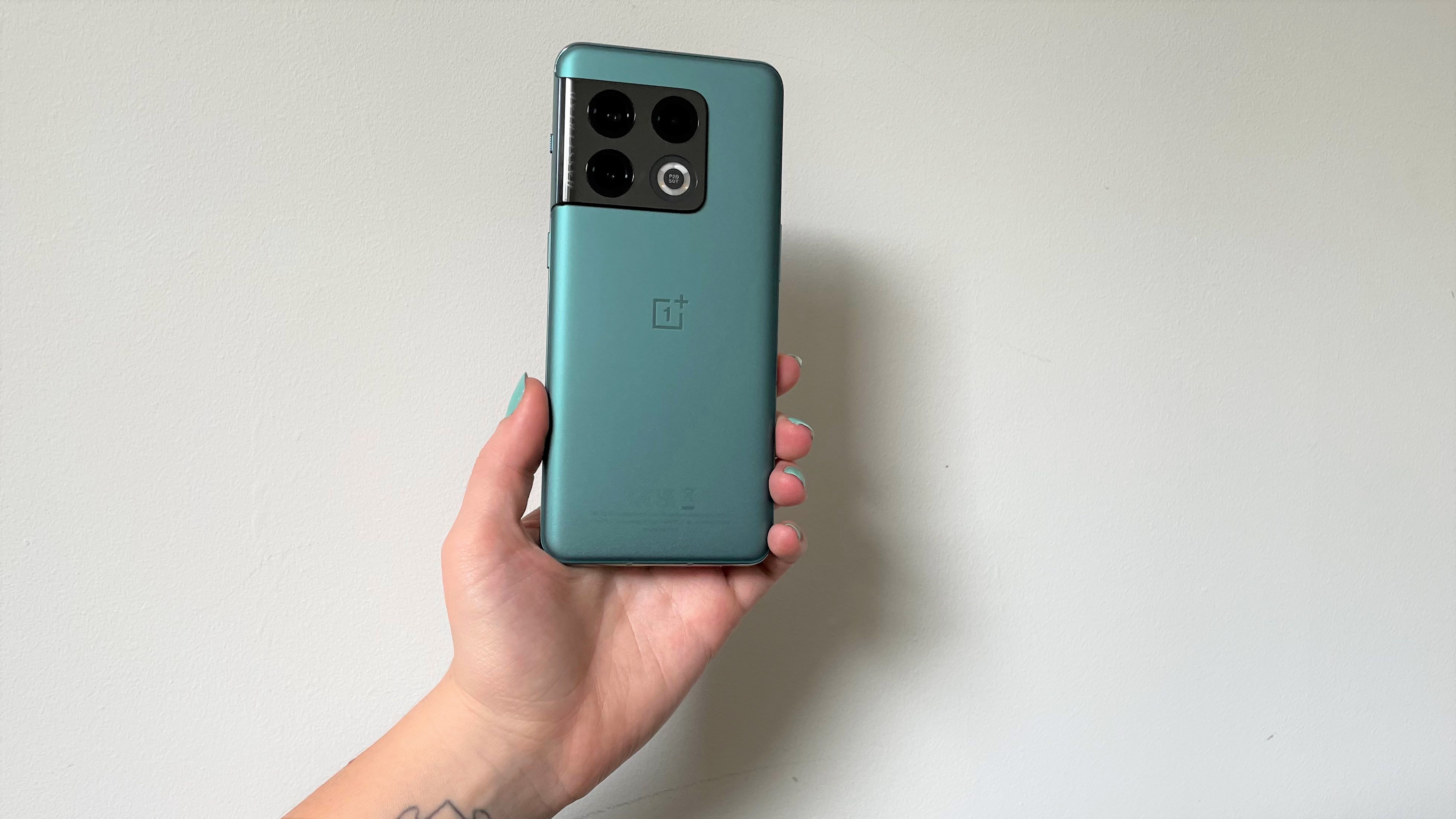
The OnePlus 10 Pro is a sleek handset with an incredible QHD+ screen, insanely fast charging and the most up to date hardware under the hood. OnePlus has also continued and evolved its partnership with Hasselblad to create yet another advanced camera system. It's not perfect but it's a worthy rival to other recent flagships.
-
+
6.7-inch QHD+, 120Hz display
-
+
Powerful efficient performance
-
+
Seriously fast charging
-
+
Effective camera system
-
-
Other phones have a better battery life
-
-
Camera can be a bit inconsistent
-
-
It is big to hold
Why you can trust T3

This OnePlus 10 Pro review is the right place to be for anyone who wants an all-singing, all-dancing smartphone - it's undoubtedly one of the best phones of the year and it's ever so slightly more affordable than some other flagship devices.
Hardly a well-kept secret, we’ve known about the OnePlus 10 Pro for a while now because it was first launched at the beginning of 2022 in China.
At MWC in February, we got official confirmation that it was going to be hitting shelves in the US and Europe later this year, and now the handset has finally arrived on our shores.
Since being founded back in 2013, OnePlus has been no stranger to success. Last year’s OnePlus 9 Pro was one of the best 5G phones you could buy at the time and continues to be a popular handset even now.
Other recent devices in their repertoire, like the OnePlus Nord 2 and the OnePlus Nord CE 2 have recently earned their spots as some of the best Android phones yet.
Given how quickly this smartphone maker has been able to make a name for itself, we've come to expect a lot from their devices, and since merging with Oppo last year we've been expecting even more.
Here's everything you need to know about the OnePlus 10 Pro, as well as a short video demonstrating what you can expect when you open up the box.
Get all the latest news, reviews, deals and buying guides on gorgeous tech, home and active products from the T3 experts
OnePlus 10 Pro review: unboxing
OnePlus 10 Pro review: price and availability
Launched globally on the 31st March 2022, the OnePlus 10 Pro is available for pre-order right now in the US and the UK, although it won’t reach Australia as far as we know.
You can buy it in a couple of different variants. The first comes in Volcanic Black and gives you 8GB of RAM with 128GB of storage, it will set you back $899 in the US and £799 in the UK.
The second variant comes in Emerald Forest and gives you 12GB of RAM alongside 256GB of storage, you’ll be able to pick that up for £899 in the UK but there's no news on any US pricing for this model yet.
OnePlus 10 Pro review: what’s new
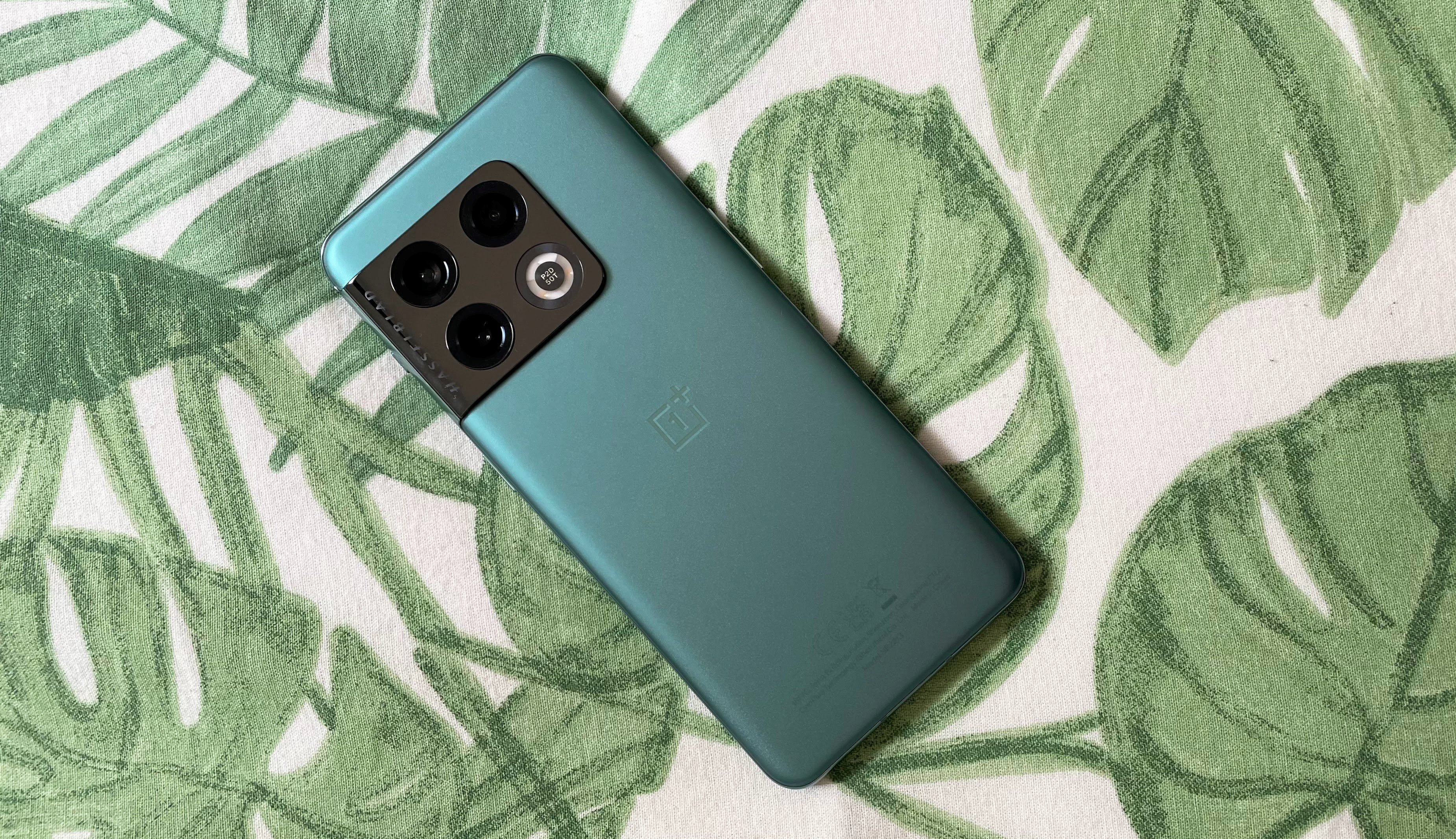
As you'd expect, the OnePlus 10 Pro looks a little different to the OnePlus 9 Pro with a redesigned camera module, new colours and a more natural placement for the fingerprint scanner, but it’s the camera system that is really worth talking about.
As well as the 48MP main camera, 50MP ultra-wide-camera and 8MP telephoto lens, you get a new selfie camera on the front of the phone, boosted from 16MP on the OnePlus 9 Pro to 32MP here.
This is the second generation of the OnePlus flagship to benefit from their partnership with camera manufacturer Hasselblad, but this time around it’s been improved, adding a new 150-degree ultra-wide-angle camera and OnePlus’ billion colour solution which means the rear camera system will now be capable of shooting in 10-bit colour as well as the standard 8-bit colour.
Elsewhere you’ll find an improved LPTO display, a Snapdragon 8 Gen 1 processor and a new heat dissipation system to boost its efficiency. The battery has also been upgraded to 5,000mAh and you’ll also get 80W SUPERVOOC charging which claims to give you a full day’s power in only 15 minutes.
As you’d expect from a flagship handset in 2022, the OnePlus 10 Pro comes loaded with the most recent OxygenOS 12.1 based on Android 12. Along with that comes a few new features including the OnePlus Shelf, Work Life Balance 2.0 and an improved Dark Mode as well as tonnes of customisation options.
OnePlus 10 Pro review: design and display
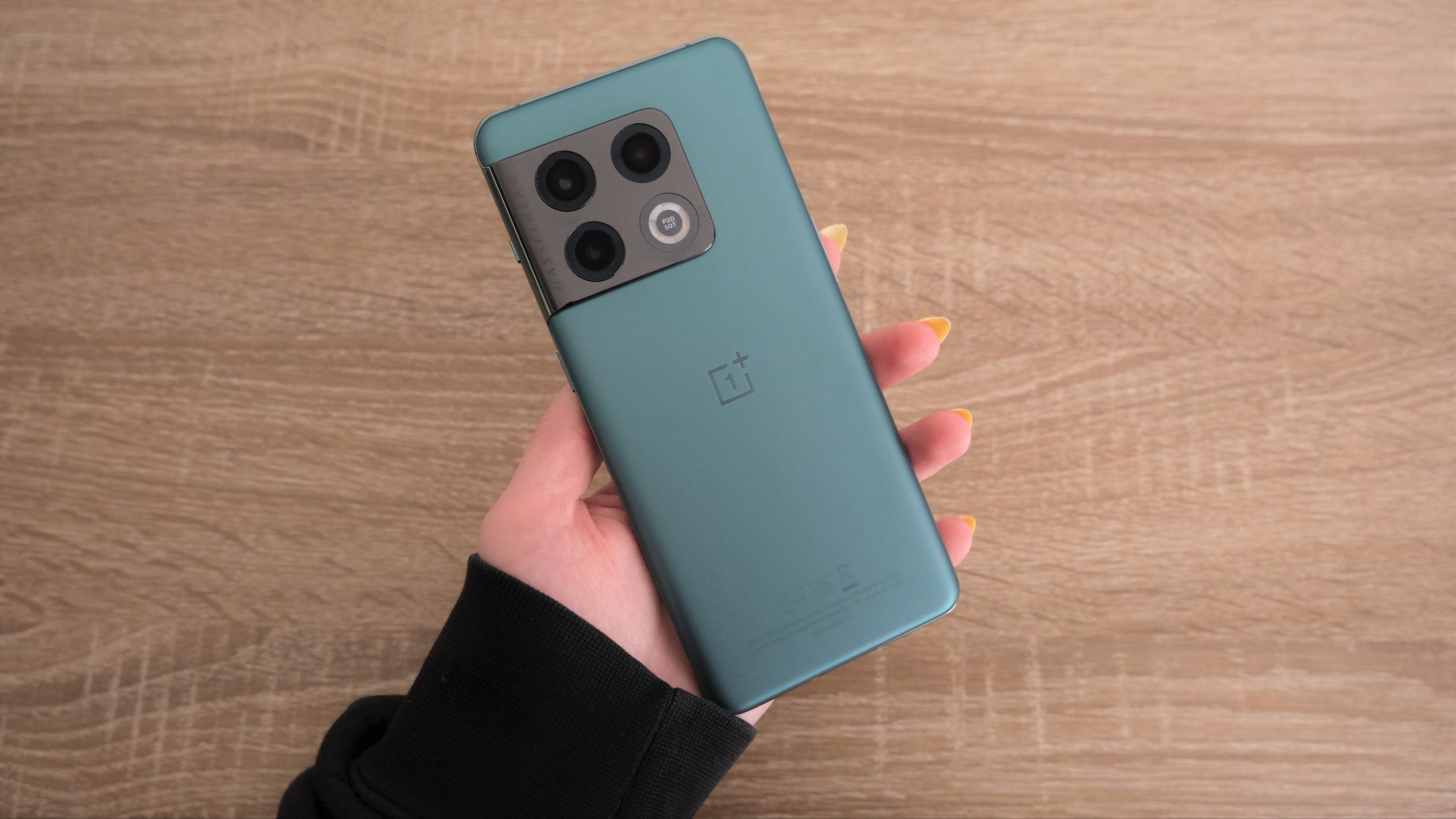
OnePlus has given this phone a bit of a design refresh and its new look feels a lot more elegant and grown-up than it did before.
The back of the phone is covered in matte glass that shimmers rather than glows. You can see the OnePlus logo and licensing information on it, but it blends in nicely with the back panel so it’s hardly even noticeable.
You can buy the OnePlus 10 Pro in just two colours: Volcanic Black and Emerald Forest. But which one you go for will partly be down to how much storage and RAM you want as the options vary by colourway.
The ceramic square camera module is clearly the main focus of the device. It looks lovely but more importantly, it doesn’t stick out too far so you can use the phone lying flat on a table without it wobbling.
For anyone this is quite a big phone, measuring 163 × 73.9 × 8.55mm and weighing 201g. Those with smaller hands may find it a bit of a pain but it’s not quite as difficult to use as a phone like the Google Pixel 6 Pro, for example. There is also a one-handed mode to help make things easier for you.
In the box, the phone comes with a matching protective case to protect the back from scrapes and dirt. But even without it, you get the feeling that it’ll survive small knocks and I didn’t notice a single fingerprint mark appear while I was using it either.
OnePlus is one of the only smartphone brands in the world that still has an alert slider on the frame and I’m pleased that they've kept it. It’s really handy to be able to switch so quickly between ring, vibrate and silent, especially when you’re in a dark room like a cinema or theatre and you realise you had forgotten to change it.
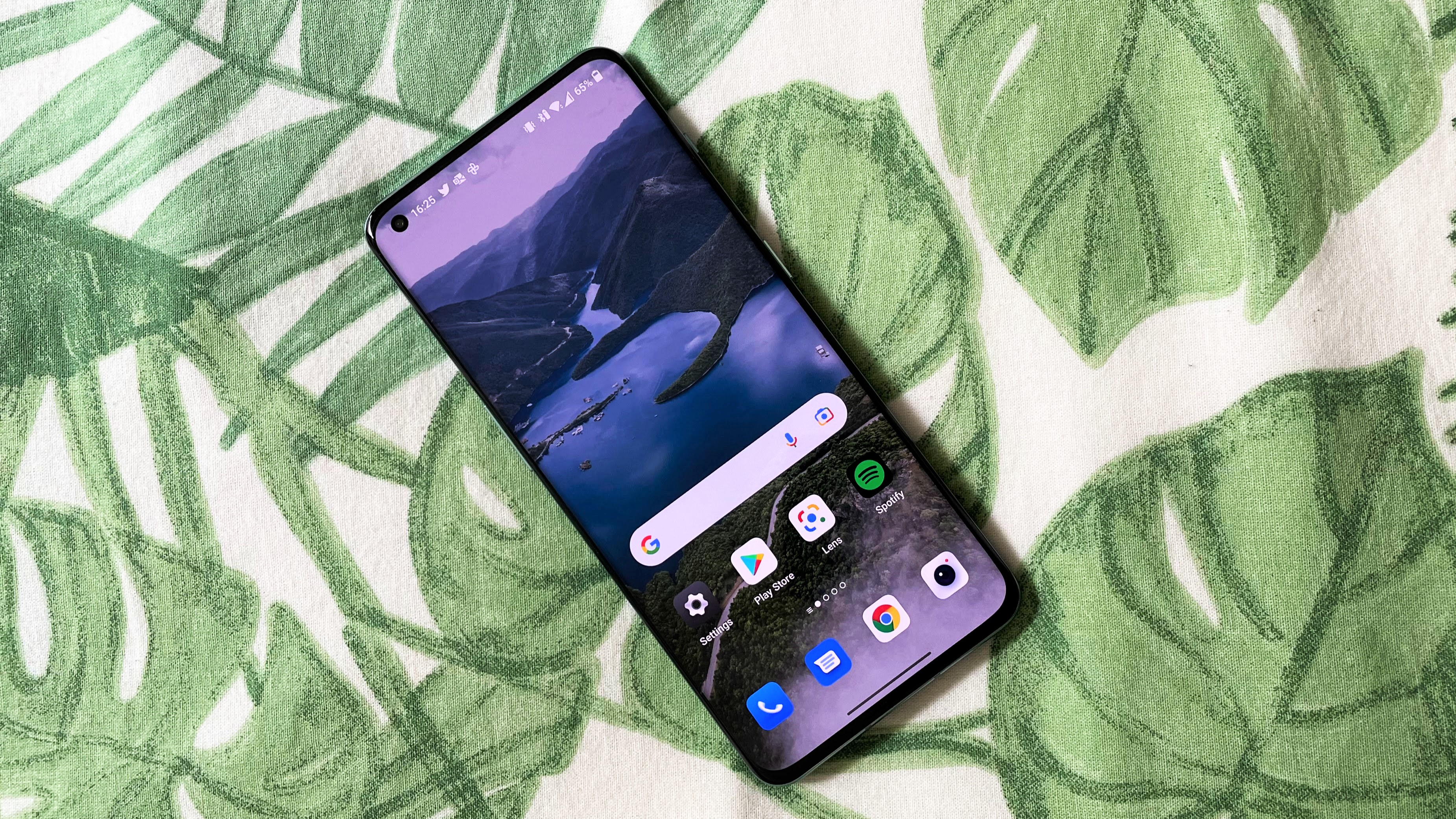
Elsewhere around the frame, things are pretty standard with a power button on the right-hand side, volume controls on the left and a USB-C port on the bottom.
A huge 6.7-inch screen makes this phone well suited to all sorts of tasks be it streaming video, getting work done on the go, composing shots or playing mobile games.
The resolution sits at 3216 × 1440p QHD+ with a whopping 10-bit colour depth and 525 pixels per inch. You can’t argue against it, it’s one of the best screens on the market right now.
The quality of the display comes across well on social media apps like Instagram or YouTube, but you'll really see its full potential when you’re streaming darker TV shows, like Peaky Blinders. It manages to maintain an impressive level of contrast so you can see every inch of the scene even in the dimmest corners.
To improve how you see the screen throughout the day, the OnePlus 10 Pro uses Dual Colour Calibration, which means that it has been adjusted to deliver accurate colours at two levels of brightness (as opposed to just one like a lot of other phones). Just because you have the brightness set to be lower, doesn’t mean the colours should look any less natural.
OnePlus 10 Pro review: camera system
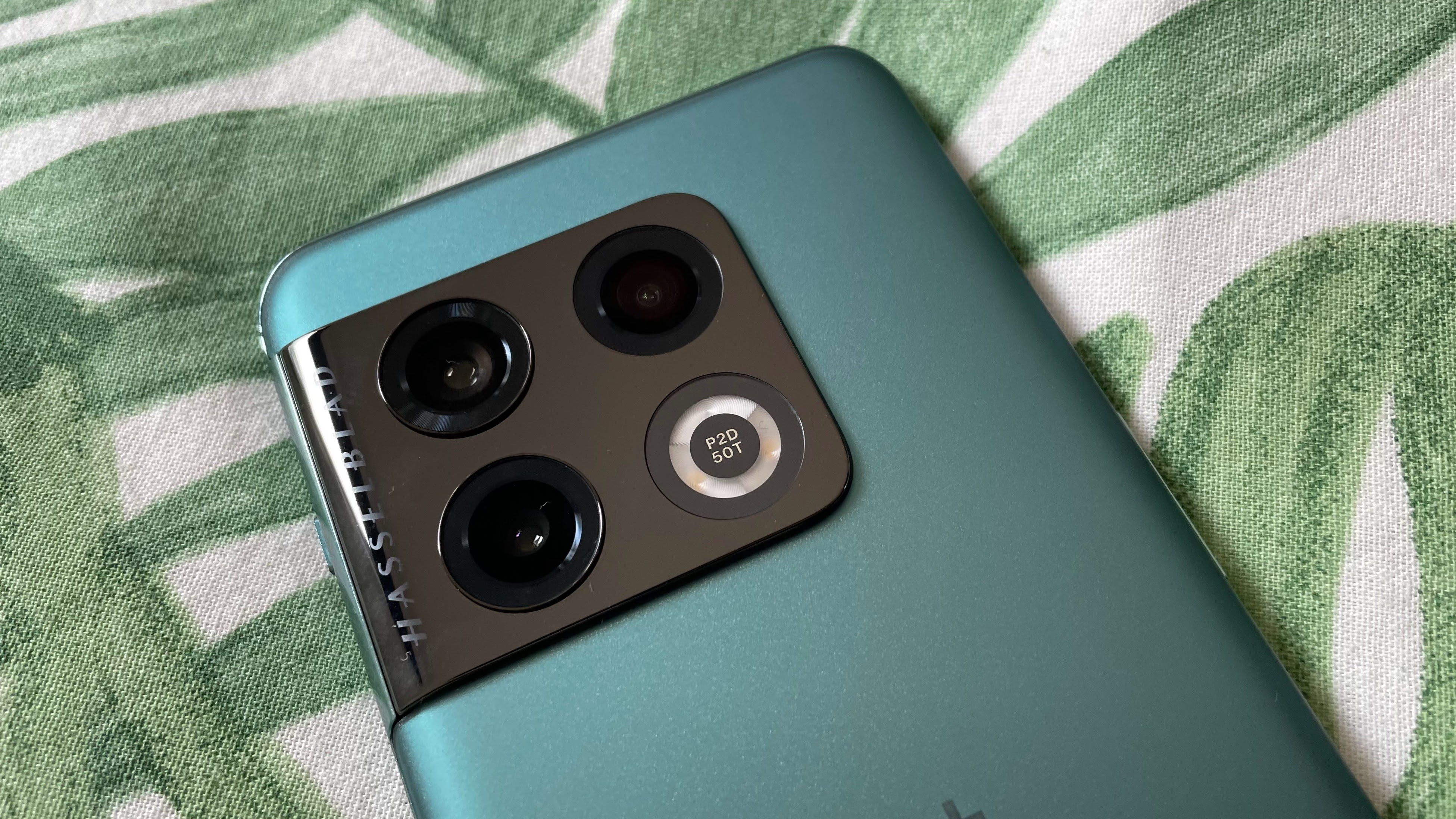
As mentioned above, the OnePlus 10 Pro packs a three-lens rear camera system made up of a 48MP main camera, a 50MP ultra-wide camera and an 8MP telephoto camera as well as a 32MP selfie snapper.
Generally, photos came out really well on the OnePlus 10 Pro, whatever the subject was - I snapped photos of cityscapes, flowers and landscapes. It won't quite compare to the very best Samsung phone but it's undoubtedly OnePlus' most advanced camera system yet.
All of the photos had plenty of detail and the system managed to brighten up every element of the shot to be clearly within view. Colours look good for the most part, they're not oversaturated but occasionally they could look a little washed out which was a shame. Take a look at some examples of the shots I took below.








OnePlus’ partnership with camera giant Hasselblad has continued and evolved in this handset which means there are some fantastic new features to play around with, as well as some improvements on what was there before.
The most significant new feature is the optional 10-bit colour support across the whole rear camera system. That means it can process 64 times more colours than most smartphones which usually only offer 8-bit photography - that’s 1 billion different colours. Ultimately what that will mean for you is even more vibrant, accurate photography.
It’s certainly a future-proof feature but do bear in mind that most screens still don’t support 10-bit so while you’ll be able to see the results on the phone itself, a lot of laptops and monitors won’t be able to display the photos to their full potential.
You’ll also now get the benefit of a new 150° ultra-wide camera which you can also use with a fun fisheye effect. You can see how those came out below.


An 8MP telephoto camera gives you up to 3.3x optical zoom with a 30x digital zoom, although I'd imagine you'll only realistically use shots up to about 10x zoom because they just become grainy after that.

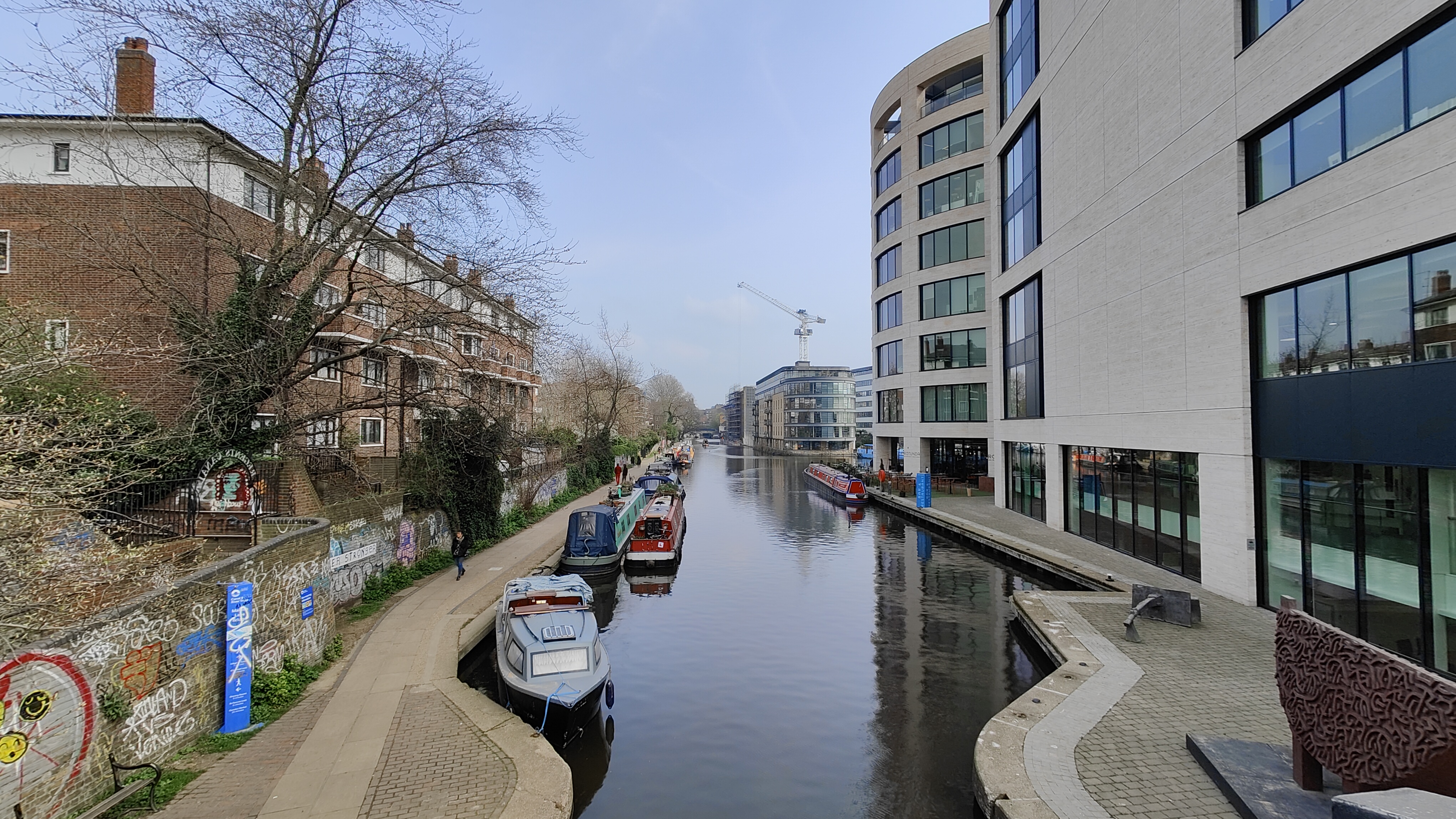


To make your shots look more professional or artsier, there are three new filters for you to try out. Each one was calibrated by a Hasselblad photographer. Serenity is made for portraits, Radiance was designed to take stylised shots and Emerald will be best used for landscape photography.
For the more practised photographer, the OnePlus 10 Pro lets you use the Hasselblad Pro Mode across all of the rear cameras, and you’ll also get a RAW+ mode that lets you shoot in up to 12-bit RAW.
Another more advanced feature is the Movie Mode which allows you to adjust the ISO, shutter speed, and white balance before and during filming.
OnePlus 10 Pro review: performance and battery
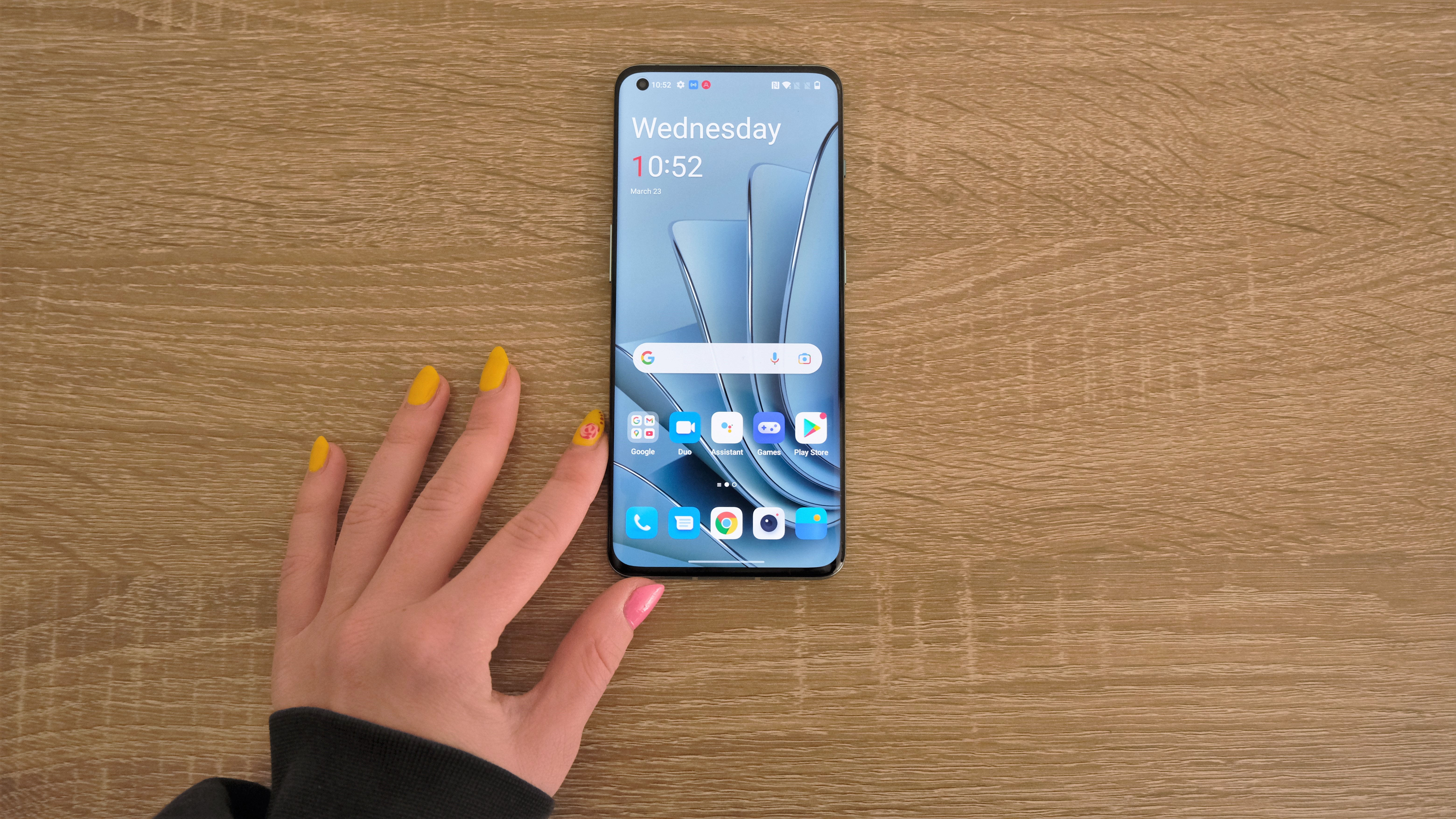
Powering the OnePlus 10 Pro is the Snapdragon 8 Gen 1 which is Qualcomm's latest and best chipset. To go alongside that, the phone I tested out has 12GB of RAM and 256GB of storage. If you need a bit of extra muscle you can borrow up to 7GB from your storage to be used as RAM. It's worth knowing that there’s no MicroSD card slot to expand the internal memory.
Using the phone was a total joy because I couldn't find any problems with it at all. There wasn't any glitching or lagging even when I used larger apps, I was able to effortlessly flick between open windows and I navigated through the system without ever having to deal with irritating loading wheels.
On the Geekbench 5 benchmarking test, the OnePlus 10 Pro picked up scores of 980 in single-core and 3,380 in multicore which is pretty similar to other recent flagships with the same chipset including the Oppo Find X5 Pro but is admittedly slightly lower than some others like the Samsung Galaxy S22 Ultra.
So what about battery life? The OnePlus 10 Pro packs in a huge 5,000mAh battery and it easily lasted for longer than a day. During that time I listened to music on my commute, flicked through the news, sent loads of messages and even did some online shopping.
To compare it to other phones I've tested out, I downloaded and played a TV show over the space of two hours on full brightness. In that time, the battery level dropped by 14% so would have lasted just over 14 hours in total. That's not best in class but it's good enough.
Included in the box, you get an 80W SUPERVOOC charger which OnePlus has taken from Oppo. It claims to give you a full day’s charge in just 15 minutes (about 60% battery) or a full charge in only 32 minutes. It's worth knowing that if you're in North America you'll be getting a 65W charger instead.
Of course, I needed to put that to the test and it did indeed only take half an hour to fill the phone up. Such speedy charging is game-changing because it means you don’t need to remember to plug your phone in hours before you leave the house, instead a last-minute top-up will be plenty.
If you own a compatible charger, the OnePlus 10 Pro supports 50W AIRVOOC wireless charging. You'll even get reverse charging here, where you can use this phone to charge your other devices like your headphones if you get caught in a rut.
OnePlus 10 Pro review: features
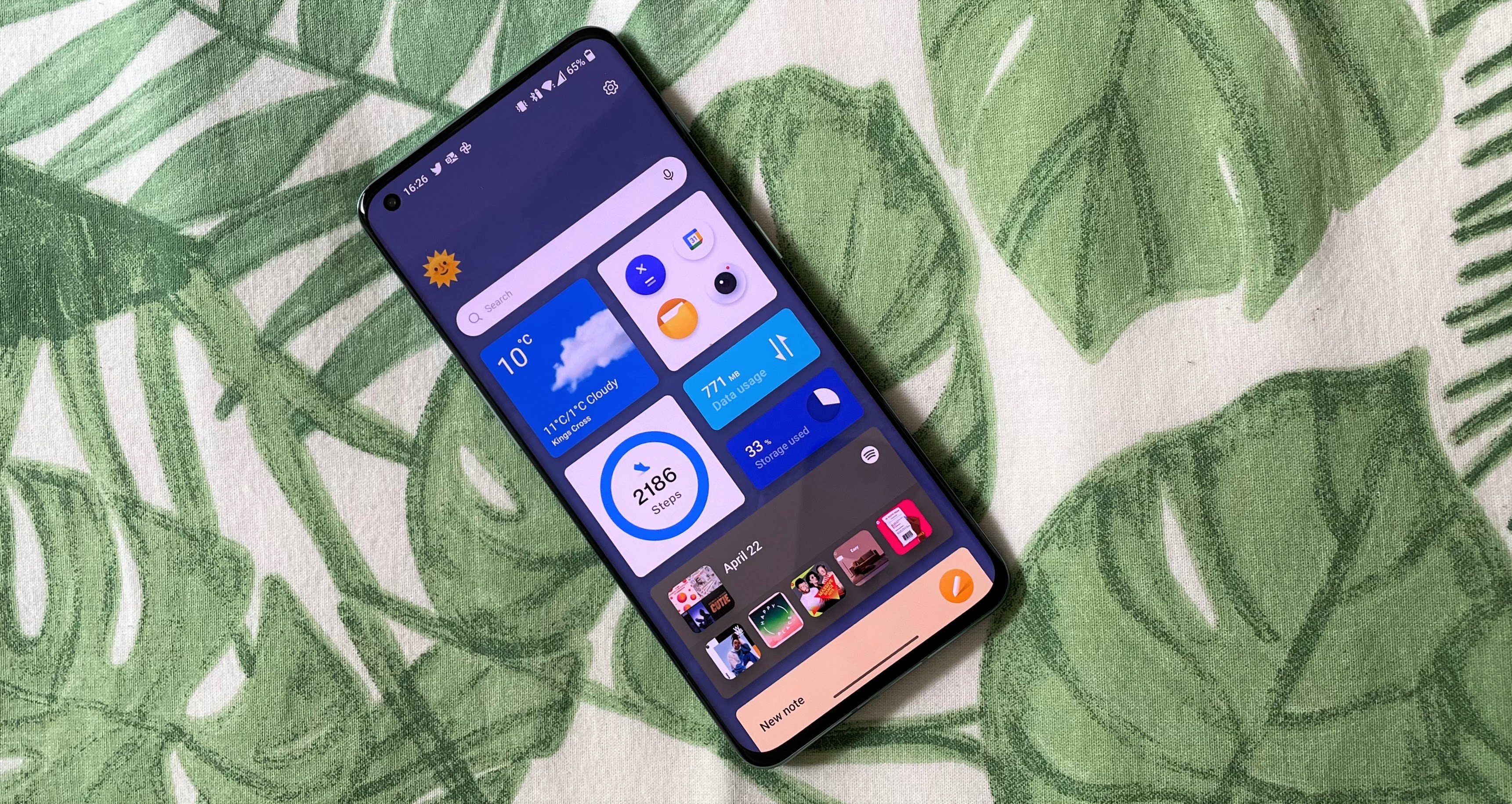
The brain of the operation is OxygenOS 12.1 based on Android 12. It’s undoubtedly one of the best Android skins there is. While it’s not quite as intuitive as stock Android or as good-looking as Samsung’s One UI, Oxygen OS is very easy to use and doesn’t look too cartoonish or childlike.
Going forwards, the OnePlus 10 Pro will benefit from 3 major Android updates and 4 years of security updates.
You get plenty of ways to customise the system with options to change the general colour scheme, the shape of the icons and the fingerprint scanner animation. You’ll also get a selection of themes for the always-on display which can feature your own Bitmoji, a canvas sketch of your photos or even insight into your phone usage.
There aren’t that many Always-On Display options though, and the ones you do get aren’t quite as nice as elsewhere, like the mandala effects you get on Oppo phones, for example.
My only other problem with it is admittedly a bit petty, but I do find it annoying that the clock is set to show all 1s in red to reflect the OnePlus branding, it’d be much better if you had the option to change that.
So-called ‘special features’ come with OxygenOS and include Work Life Balance, OnePlus Shelf and OnePlus’ own Scout search tool to find contacts, files and apps stored on the phone. There’s also Quick Launch which helps you to open apps much more quickly when you unlock the phone.
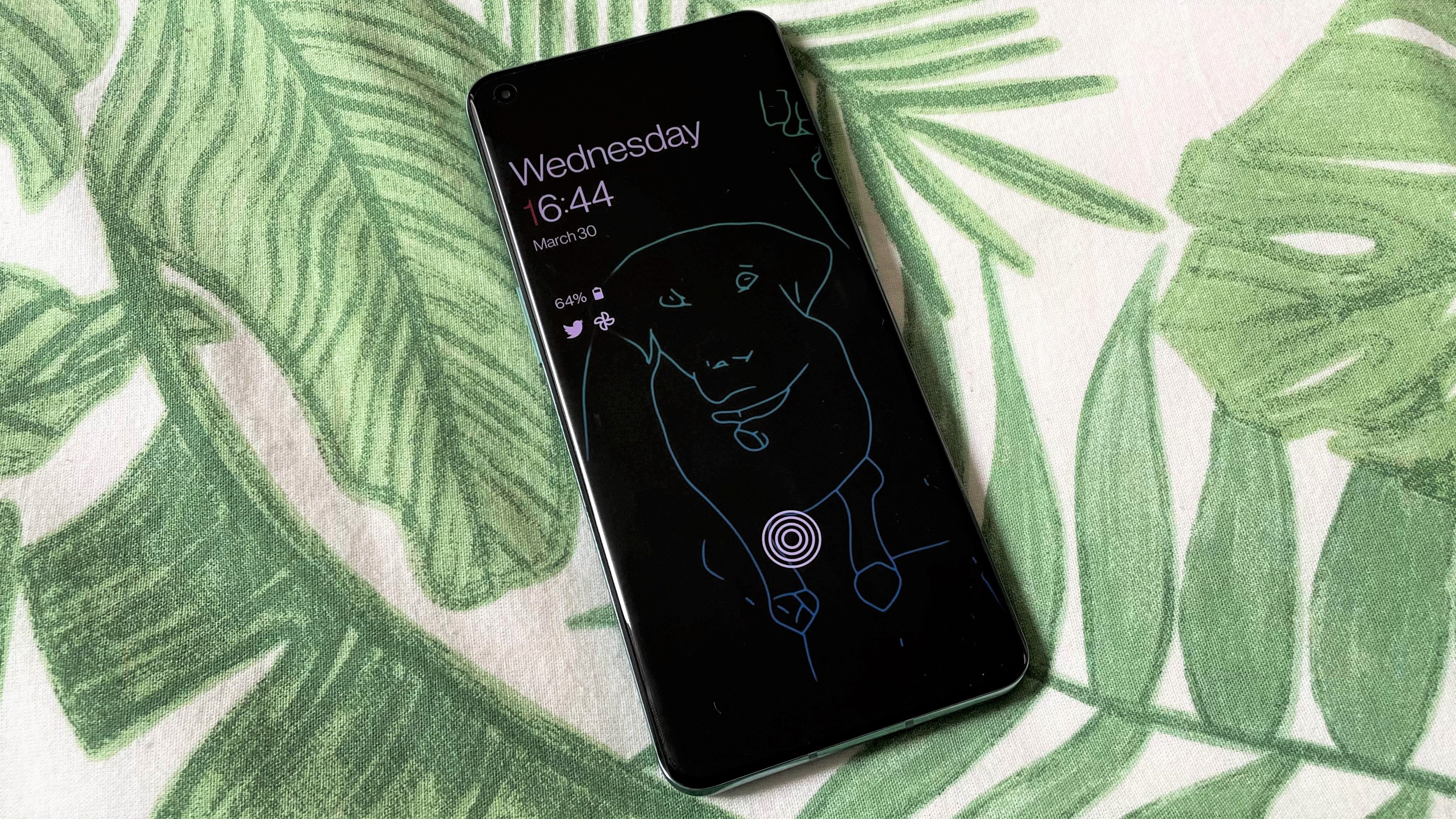
The OnePlus 10 Pro comes with new and improved Work Life Balance 2.0 to stop you from getting distracted by your phone when you’re working and to help you forget about your to-do list when you’re done for the day.
You can choose to set hours, a location or a Wi-Fi network to activate it, then you pick which of your apps are there for work. Once switched on, this feature can stop you from getting distracting notifications from social media during the day or work emails in the evening. It’ll also try and stop you from procrastinating on your leisure apps by asking if you’re sure you want to open them.
Another feature worth knowing about is the OnePlus Shelf. It features a number of handy widgets and information that you might want quick access to, like the weather forecast, your notes or your step count.
To pull it up onto the screen you swipe downwards from the top right corner which does need a bit of getting used to because it often gets confused for the top menu. It’s a shame you can’t pick a different gesture for it.
OnePlus 10 Pro review: verdict
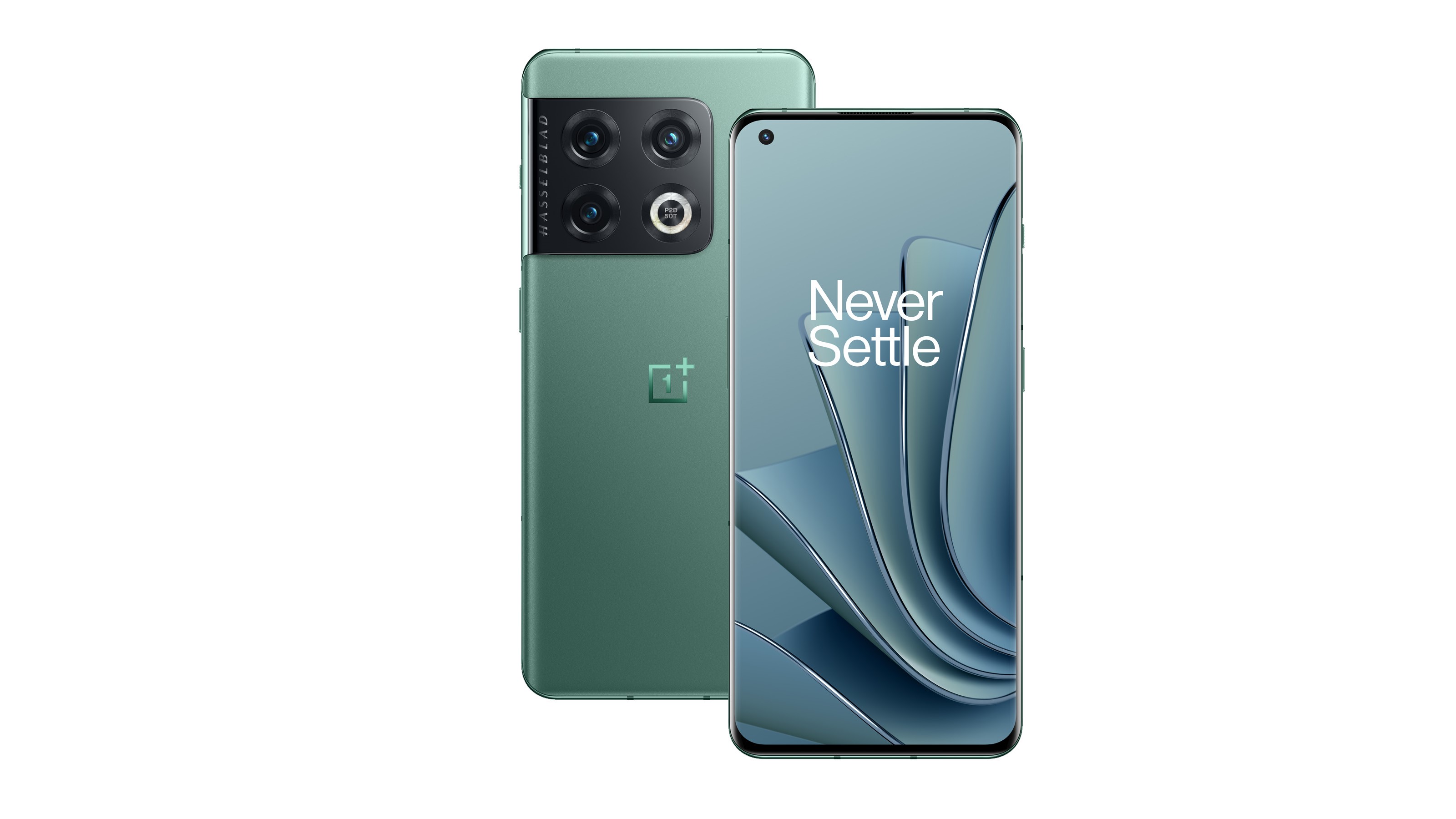
The OnePlus 10 Pro is undoubtedly a step up from last year's OnePlus 9 Pro, boasting an upgraded camera system, more powerful hardware, a killer screen and super-fast charging.
Thanks to the new features, the camera is still this phone's crowning glory. You'll be able to compose some really impressive shots on it. Although admittedly I'm not sure how many people will actually be able to see the benefits of 10-bit photography or at least not until 10-bit screens are more commonplace.
Long story short, the OnePlus 10 Pro can almost do it all. Whether you're a budding photographer, you value a big bright screen or you care more about power and efficiency, it's hard not to recommend this phone.
OnePlus 10 Pro review: also consider
If you’re umming and ahhing between this and Oppo’s recent flagship, the Oppo Find X5 Pro, I would say that there are a lot of similarities between the two but the OnePlus 10 Pro is a lot cheaper so it’s perhaps the better choice for most people. If money is no object then the experience you get from the Oppo is marginally better.
Those who are looking to spend a bit less cash should take a look at the Realme GT 2 Pro. It actually performed better when it came to performance, despite packing the same chipset as the OnePlus 10 Pro. It also has a unique design, decent camera and good battery life.

Yasmine is the former Reviews Writer for T3, so she's been knee-deep in the latest tech products for reviewing and curating into the best buying guides since she started in 2019. She keeps a finger on the pulse when it comes to the most exciting and innovative tech – and since departing has also held a role as Digital Spy's Tech Editor. In her free time, you'll catch her travelling the globe – the perks of being a freelance tech expert – tending to her plants when at home and, but of course, planning her next big trip.